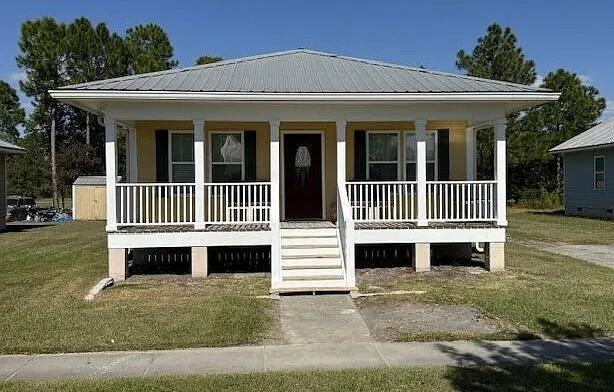Turning Fixer-Uppers into Dream Homes
One of the most exciting aspects of real estate investing is the potential to transform a fixer-upper into a beautiful, marketable home. Renovating properties can add significant value, boost rental income, and even offer personal satisfaction. However, the process can seem overwhelming for those unfamiliar with construction and design. Don’t worry! With the right strategies and a clear vision, you can take any rundown property and turn it into a dream home for your future tenants or buyers.
In this blog, I’ll share the top renovation secrets to help you tackle fixer-uppers with confidence and turn them into stunning properties that will stand out in the market.
1. Start with a Solid Plan and Budget
Before you even pick up a hammer, the first and most important step in any renovation project is to create a solid plan and set a realistic budget. Renovating a fixer-upper can quickly go over budget without proper planning, and the last thing you want is to be financially strained halfway through a project.
How to Create a Plan:
Assess the Property: Walk through the property and take note of the structural issues, cosmetic problems, and areas that need improvement. Consider hiring a professional inspector to identify hidden issues like electrical problems, plumbing leaks, or foundation cracks.
Prioritize Renovations: Focus on areas that will yield the most value, such as kitchens, bathrooms, and curb appeal. Don’t over-invest in areas that aren’t visible or won’t improve the home’s livability.
Establish a Budget: Factor in the cost of materials, labor, permits, and unexpected expenses. Make sure to leave a buffer (usually 10-15%) for surprises that could pop up during the renovation process.
Why It Matters:
A well-thought-out plan keeps your project on track and within budget, ensuring that you don’t overextend yourself financially. It also helps you avoid unnecessary delays, which can add costs and slow down your timeline.
2. Focus on the Kitchen and Bathrooms
The kitchen and bathrooms are typically the areas that provide the greatest return on investment (ROI) during a renovation. A modern, updated kitchen can make a big difference in how tenants or buyers perceive a home, while bathroom upgrades can significantly improve both function and style.
Kitchen Renovation Tips:
Upgrade the Cabinets: If your budget allows, consider replacing outdated cabinets with sleek, modern options. If you’re on a tighter budget, simply repainting or refacing the cabinets can create a fresh look.
Invest in High-Quality Appliances: Choose energy-efficient appliances that add value and make the kitchen feel like a high-end space. Stainless steel is timeless and always in demand.
Open Up the Space: If possible, consider removing walls or installing an island to create an open-plan kitchen that’s perfect for entertaining.
Bathroom Renovation Tips:
Replace Fixtures: New faucets, showerheads, and lighting fixtures can give a bathroom an instant upgrade. Consider installing modern and stylish options.
Install Quality Tile: Invest in high-quality tile for both floors and walls to enhance the aesthetic appeal. Subway tiles and marble finishes are timeless and can give a bathroom an upscale look.
Upgrade the Vanity: A sleek, modern vanity can add storage and style to any bathroom, making it feel more luxurious.
Why It Matters:
Kitchens and bathrooms are key areas that potential tenants and buyers pay attention to. A renovated kitchen or bathroom can set your property apart from others and lead to higher rents or quicker sales.
3. Enhance Curb Appeal
First impressions are everything, and the exterior of a home is the first thing people see when they approach the property. Increasing your curb appeal not only improves the home’s aesthetics but can also boost its market value.
How to Improve Curb Appeal:
Paint the Front Door: A bold color like red or navy blue can make your front door stand out and create a welcoming feel.
Landscaping: Planting shrubs, flowers, and trees can soften the exterior and make the property feel more inviting. Keep the lawn tidy and consider adding a fresh layer of mulch.
Update the Porch or Entryway: Add a new light fixture, clean up the steps, and maybe even add a welcoming doormat or outdoor furniture to create an attractive entryway.
Why It Matters:
Curb appeal is one of the first things potential tenants or buyers notice. A well-maintained exterior creates an inviting atmosphere and can increase the perceived value of your property, even before they step inside.
4. Don’t Skimp on the Basics: Electrical, Plumbing, and HVAC
While cosmetic upgrades are essential, don’t neglect the basic systems that make a home functional. Issues with electrical wiring, plumbing, and HVAC systems can be costly and dangerous if not addressed properly.
How to Update Systems:
Electrical Updates: Check the wiring, outlets, and breaker panels to ensure they meet current safety standards. If you plan on adding high-tech features, make sure the electrical system can handle the increased load.
Plumbing Fixes: Check for leaks, faulty pipes, and outdated water heaters. Replacing old fixtures and pipes can prevent future problems and improve water pressure.
HVAC Systems: Ensure the HVAC system is up to date and working efficiently. Clean or replace filters and ducts, and consider upgrading to energy-efficient models to improve the home’s overall comfort and efficiency.
Why It Matters:
Investing in the home’s core systems can save you money in the long run. Potential tenants or buyers are more likely to rent or purchase a property if they know the major systems are up-to-date and in good working order.
5. Add Smart Home Features
Incorporating smart home technology is a great way to modernize a property and attract tech-savvy tenants or buyers. These features not only provide convenience but can also make the property stand out in a competitive market.
Popular Smart Home Features:
Smart Thermostats: Devices like the Nest thermostat allow tenants to control heating and cooling from their phone, offering both comfort and energy savings.
Smart Locks: Keyless entry systems can enhance security and make the property more appealing to tech-savvy tenants.
Smart Lighting: Install smart bulbs or lighting systems that can be controlled remotely for convenience and energy efficiency.
Why It Matters:
Smart home features are becoming increasingly popular among renters and homeowners. Adding these modern conveniences can increase the property’s appeal and justify higher rental rates or sale prices.

